![]()
As scientists use the $10 billion James Webb Space Telescope (JWST) to answer some of the Universe’s most pressing questions, they’ve also uncovered new questions, including literal question mark-shaped cosmic objects.
This isn’t the first time Webb has seen something shaped like a question mark in space. In July 2023, when observing Herbig-Haro 46/47, Webb located a question mark-shaped object, which scientists at the Space Science Telescope Institute (STScI) in Baltimore told PetaPixel were likely a park of distant, merging galaxies.
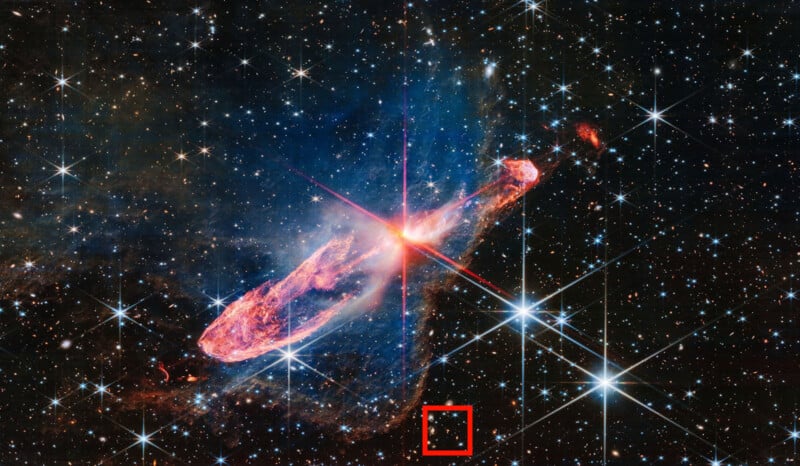
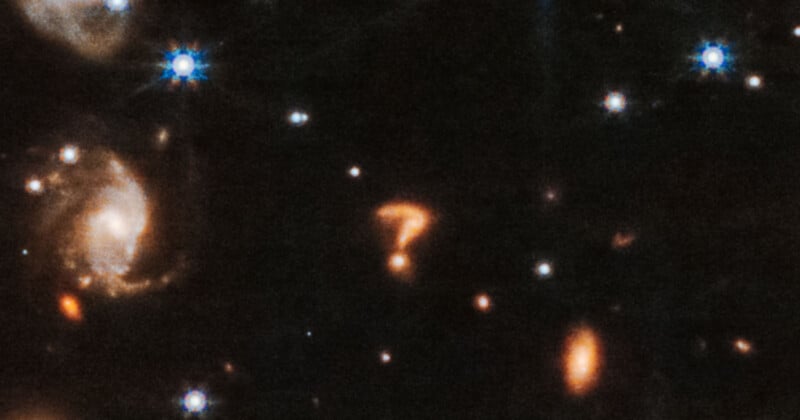
The case of the new cosmic question mark, located in the galaxy cluster MACS-J0417.5-1154, is the result of time-space distortions. The cluster is so massive that “it is warping the fabric of space-time and distorting the appearance of galaxies behind it,” NASA explains.
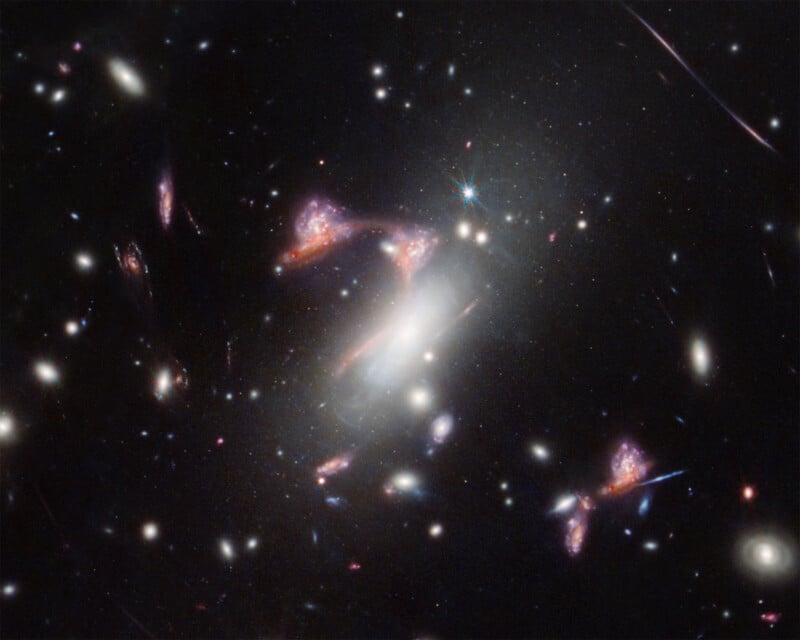
The Hubble Space Telescope has previously observed this region, and Webb’s different imaging capabilities provided a fresh, detailed perspective. Since Webb can detect longer wavelengths of light than Hubble, it is able to peer through cosmic dust and see what’s behind it.
When Hubble viewed MACS-J0417.5-1154, it observed a few galaxies seemingly interacting with each other — or at least being affected by gravitational lensing, which occurs when extremely massive objects magnify and distort distant light. However, when Webb peered into the cosmos, it saw red tendrils connecting multiple galaxies, forming a question mark.
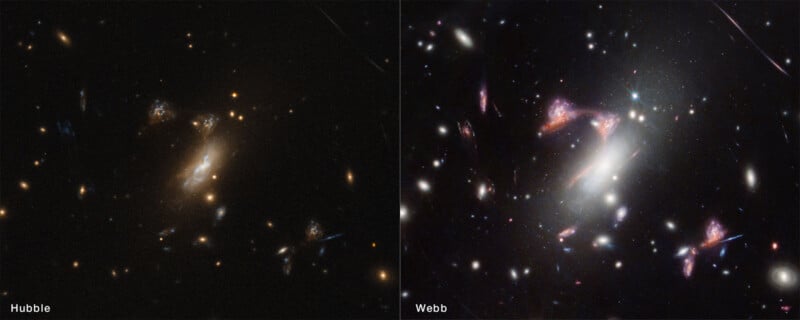
“This is just cool looking. Amazing images like this are why I got into astronomy when I was young,” says astronomer Marcin Sawicki of Saint Mary’s University in Halifax, Nova Scotia, Canada, one of the lead researchers on the team.
“Knowing when, where, and how star formation occurs within galaxies is crucial to understanding how galaxies have evolved over the history of the universe,” explains astronomer Vicente Estrada-Carpenter of Saint Mary’s University, who used Hubble’s ultraviolet and Webb’s infrared data to look where new stars are forming in the observed galaxy.
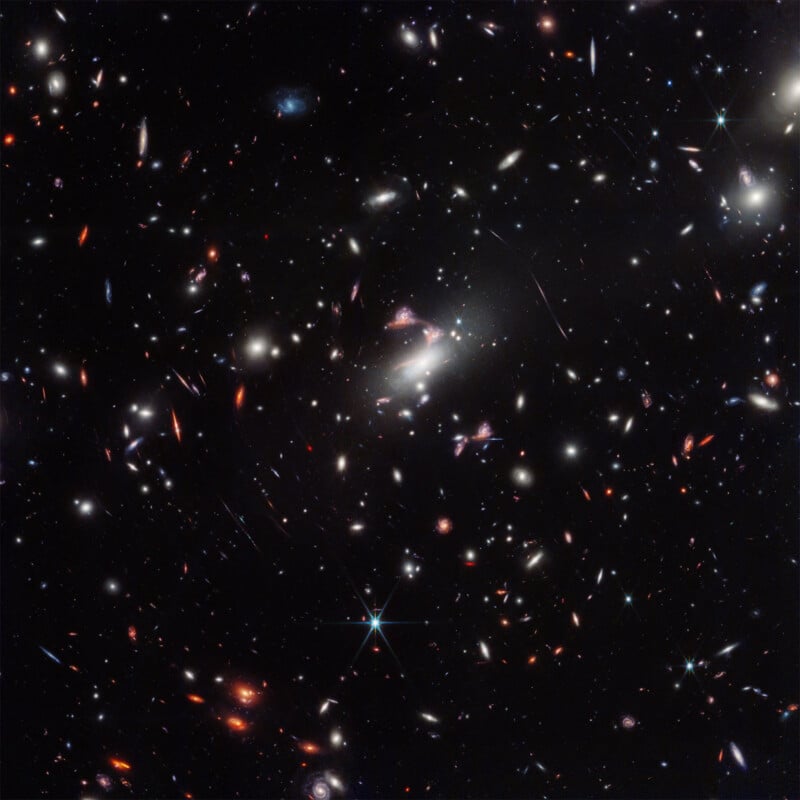
“Both galaxies in the Question Mark Pair show active star formation in several compact regions, likely a result of gas from the two galaxies colliding,” Estrada-Carpenter adds.
“However, neither galaxy’s shape appears too disrupted, so we are probably seeing the beginning of their interaction with each other.”
Image credits: NASA, ESA, CSA, STScI, Vicente Estrada-Carpenter (Saint Mary’s University)
